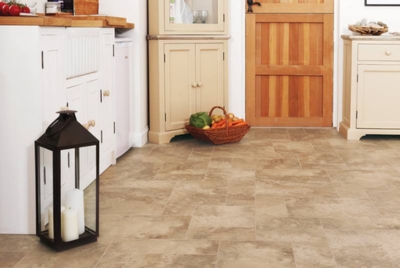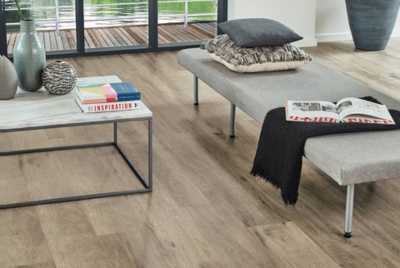Glued vs. Floating Floors: Making the Right Choice for Your Space
By Cody Bouquet,
When it comes to choosing the right flooring for your space, the debate between glued and floating floors is often a significant consideration. Both options have their merits, but understanding the nuances is crucial in making an informed decision tailored to your needs.
Radiant Heat Efficiency: Choosing Between Glued and Floating Floors
One critical aspect to consider is the efficiency of radiant heat. Glued-down floors establish direct and firm contact with the substrate, enabling efficient heat transfer into the room. However, floating floors, disconnected from the substrate, create an insulating air pocket that can impede heat transfer, potentially affecting the room’s warmth and energy consumption.
The Role of Pad or Underlayment in Glued vs. Floating Floors
The distinction between traditional padding and the underlayment used in vinyl floors is essential. In floating floors, this underlayment serves to dampen noise, reducing the sound produced when the floor makes contact with the substrate. Conversely, glued-down vinyl floors, owing to their direct attachment, often don’t necessitate this extra layer unless specified, such as in cases involving strict HOA regulations.
Handling Large Spaces: Implications for Glued and Floating Floors
For larger areas, the choice between glued-down and floating floors becomes crucial. Glued-down vinyl emerges as a suitable option due to its independent installation pieces, ensuring stability irrespective of the room’s size. Conversely, floating floors, more prone to expansion and contraction, can pose challenges, especially when dealing with expansive spaces or heavy furniture that may cause joint separations.
Water Incidents: Glued vs. Floating Floors
The response to water incidents sheds light on the differences between the two options. Glued-down floors, although requiring some re-gluing in certain cases, generally handle water exposure better without significant damage. However, floating floors may require plank removal, meticulous reassembly, and sequence matching, adding complexity to the restoration process.
Flooring Removal and Repairs: Comparing Glued and Floating Floors
While it’s relatively easier to remove a floating floor for replacement, the glued-down option offers flexibility in covering existing floors, potentially saving time and effort. Additionally, when repairs are needed, the glued-down option allows for seamless individual piece replacement without disturbing adjacent tiles. In contrast, repairs on a floating floor demand professional attention and more extensive work.
Making the choice between glued and floating floors entails considering various factors, including heating efficiency, room size, and maintenance requirements. At Creative Carpet & Flooring, our experts specialize in understanding these nuances and guiding you through the selection process. Whether you prefer the steadfast adherence of glued-down floors or the versatility of floating floors, we’re dedicated to helping you find the perfect flooring solution for your space.


